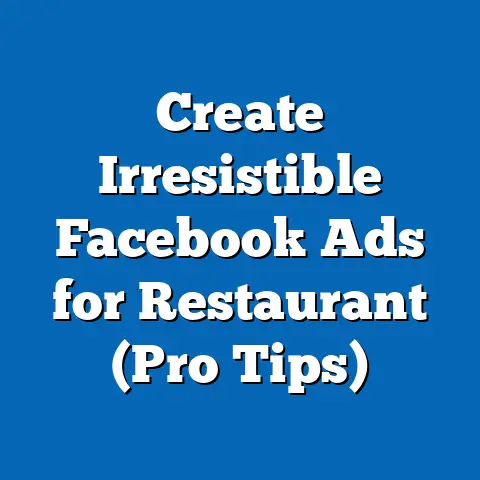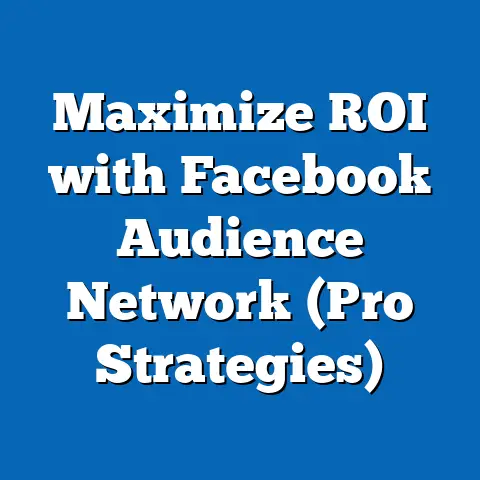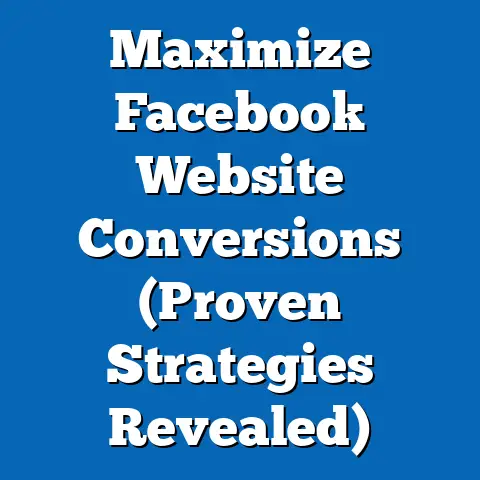Mastering iPhone: Disable Facebook Ads (Expert Guide)
I remember the early 2000s, when the internet was still a novelty for many, and social media was just beginning to take shape with platforms like MySpace. Back then, the idea of targeted ads following you across websites felt like science fiction, and privacy concerns were often limited to not sharing your home address online. Fast forward to today, and the digital landscape is vastly different—our personal data is a currency, and platforms like Facebook (now Meta) have become central to how we connect, consume, and, unfortunately, are marketed to.
Defining Generations and Their Relationship with Technology
Generational studies often categorize populations into cohorts based on birth years, shared historical events, and cultural shifts. While definitions vary slightly among researchers, common classifications include Baby Boomers (born 1946–1964), Generation X (1965–1980), Millennials (1981–1996), Generation Z (1997–2012), and the emerging Generation Alpha (2013–present). Each group has a unique relationship with technology, shaped by the era in which they came of age.
Baby Boomers, for instance, grew up in a post-World War II world of economic growth and traditional media like television and radio. Technology entered their lives later, often as a tool for work or convenience, and many approach it with caution or skepticism regarding privacy. Generation X, often called the “latchkey” generation, witnessed the birth of personal computing and the early internet, balancing analog and digital worlds with a pragmatic outlook.
Millennials, on the other hand, are often dubbed “digital natives” as they came of age during the internet boom of the late 1990s and 2000s, embracing platforms like Facebook in their formative years. Generation Z, born into a fully digital world with smartphones as a constant presence, has a more intuitive grasp of tech but also a heightened awareness of data privacy risks due to high-profile scandals. Generation Alpha, still young, is growing up with AI and voice assistants, likely to see data-sharing as a default state unless guided otherwise.
Historical Context: The Rise of Social Media and Targeted Advertising
To understand the significance of disabling Facebook ads, we must revisit the historical context of social media’s rise and the evolution of digital advertising. Facebook launched in 2004, initially as a college networking tool, but by 2008, it had introduced targeted ads based on user data—a game-changer for marketers. This period coincided with the rapid adoption of smartphones, particularly Apple’s iPhone, first released in 2007, which made social media accessible anytime, anywhere.
The 2010s saw an explosion of data collection as companies like Facebook refined algorithms to track user behavior across apps and websites. Significant events, such as the 2018 Cambridge Analytica scandal, where user data was misused for political advertising, exposed the darker side of this model. Public trust eroded, with Pew Research Center reporting in 2019 that 81% of Americans felt they had little control over data collected by companies.
For older generations like Baby Boomers and Gen X, these revelations often fueled distrust in tech giants, though many lacked the technical know-how to protect themselves. Millennials, having grown up with social media, were conflicted—addicted to connectivity yet increasingly wary. Gen Z, shaped by post-scandal awareness and stricter regulations like the EU’s GDPR (2018), often exhibits a more proactive stance on privacy, seeking tools to limit tracking.
Societal Implications: Privacy as a Generational Divide
The issue of Facebook ads is more than a technical annoyance; it reflects deeper societal tensions around privacy, autonomy, and the digital economy. Targeted advertising fuels a multi-billion-dollar industry—Statista reported that Meta’s ad revenue reached $114.9 billion in 2022 alone. Yet, this model raises ethical questions about consent, especially as younger users may not fully grasp how their data is used.
Generational attitudes toward privacy reveal stark contrasts. A 2021 study by the Annenberg School for Communication found that while 60% of Baby Boomers expressed concern over online privacy, only 25% took active steps like adjusting app settings. In contrast, 70% of Gen Z respondents reported using privacy tools or opting out of tracking, reflecting a tech-savvy, proactive mindset.
These differences impact workplaces, where older employees may rely on IT departments for privacy solutions, while younger workers demand transparency and control. Culturally, the divide shapes public discourse—Gen Z’s push for data rights influences policy, as seen with Apple’s App Tracking Transparency (ATT) feature introduced in iOS 14.5 (2021), which lets users block ad tracking. Economically, reduced tracking could disrupt ad-dependent platforms, with Meta estimating a $10 billion revenue loss in 2022 due to ATT.
Technological Factors: The iPhone as a Privacy Battleground
The iPhone, as a dominant device across generations, is central to this discussion. Apple has positioned itself as a privacy advocate, with features like ATT and on-device processing for Siri. Yet, navigating these tools requires digital literacy, which varies by age cohort.
For Baby Boomers, the iPhone’s interface can be daunting, and privacy settings are often left untouched. Gen X and Millennials, more comfortable with tech, may adjust settings sporadically, while Gen Z frequently customizes their experience, reflecting a 2022 survey by Deloitte showing 65% of Gen Z iPhone users enable ATT compared to 40% of Millennials.
Step-by-Step Guide: Disabling Facebook Ads on iPhone
Understanding generational dynamics is crucial, but so is actionable advice. Below is an expert guide to disabling or minimizing Facebook ads on an iPhone, tailored to users of varying tech proficiency. This process addresses both in-app settings and iOS privacy tools.
1. Limit Ad Tracking on iOS (All Users) – Open the “Settings” app on your iPhone. – Navigate to “Privacy & Security” > “Tracking.” – Toggle off “Allow Apps to Request to Track.” This prevents Facebook and other apps from tracking your activity across third-party sites (available on iOS 14.5 and later).
Note: If prompted by Facebook to allow tracking, select “Ask App Not to Track.” Apple’s ATT ensures apps must request permission, empowering users of all ages.
2. Adjust Ad Preferences in the Facebook App (Intermediate Users) – Open the Facebook app and tap the menu (three lines) in the bottom-right corner. – Go to “Settings & Privacy” > “Settings” > “Ads” > “Ad Preferences.” – Under “Ad Topics,” select “See Fewer” for categories you don’t want targeted ads for. – Under “Ad Settings,” toggle off options like “Data from Partners” to limit personalized ads based on external data.
Note: This doesn’t stop ads entirely but reduces their relevance. It’s a practical step for users like Millennials who want some control without abandoning the platform.
3. Restrict Data Sharing (Advanced Users) – In Facebook’s “Settings,” go to “Personal Information” and review what data (e.g., location, contacts) is shared. – Disable unnecessary permissions via iPhone “Settings” > “Facebook” (e.g., turn off “Location Services”). – Clear your off-Facebook activity by going to “Settings” > “Your Facebook Information” > “Off-Facebook Activity” > “Clear History.”
Note: Gen Z users, often more privacy-conscious, may find this step intuitive, while older users might need assistance or tutorials.
4. Use Third-Party Tools (Tech-Savvy Users) – Consider ad blockers or privacy-focused browsers like DuckDuckGo for accessing Facebook on Safari. – Install VPNs to mask your IP address, reducing location-based targeting. – Regularly update iOS to access the latest privacy features from Apple.
Note: These steps require higher digital literacy, often more common among younger generations, but can be learned with guidance.
Cultural and Economic Factors: Why Ads Persist Across Generations
Despite privacy tools, ads remain pervasive due to cultural acceptance and economic incentives. Socially, many users—especially Millennials raised on free platforms—accept ads as a trade-off for connectivity. A 2020 Nielsen report found 55% of Millennials tolerate ads if content is free, compared to 30% of Gen Z, who prioritize ad-free experiences via subscriptions.
Economically, Meta’s business model relies on ad revenue, and even privacy-focused updates like ATT haven’t fully curbed tracking. Small businesses, a key demographic across generations, depend on targeted ads for growth, with 70% of U.S. small businesses using Facebook ads (per a 2022 Meta survey). This creates a societal push-pull: privacy versus economic utility.
Nuances Within Generations: Avoiding Oversimplification
It’s critical to acknowledge diversity within generational cohorts. Not all Baby Boomers are tech-averse—many have adapted to smartphones for family communication or remote work post-COVID. Similarly, not all Gen Z users are privacy hawks; some willingly share data for personalized experiences, as a 2023 Pew study noted 40% of Gen Z values tailored content over privacy.
Geographic, socioeconomic, and cultural factors also play a role. Urban Millennials with higher incomes may invest in premium ad-free services, while rural Gen X users might lack access to tech education. Global perspectives vary too—EU users, under GDPR, have stricter privacy norms than U.S. counterparts, influencing cross-generational behavior.
Implications for Society and the Workplace
The ability to disable Facebook ads on an iPhone is a microcosm of broader societal shifts. In workplaces, generational differences in tech use create friction—older employees may feel overwhelmed by privacy settings, while younger ones push for data security training. Companies must bridge this gap, offering accessible tools and policies that cater to all ages.
Culturally, the push for privacy reflects a growing demand for digital autonomy, especially among younger generations. This could reshape social media’s future, with platforms potentially pivoting to subscription models if ad revenue declines. Public policy, too, faces pressure—laws like California’s CCPA (2020) echo Gen Z’s advocacy, but enforcement lags, leaving users to fend for themselves with tools like iOS settings.
Forward-Looking Insights: The Uncertain Future of Digital Privacy
Looking ahead, the trajectory of digital privacy remains uncertain. Apple’s continued privacy innovations, like potential expansions of ATT, may empower users further, but tech giants like Meta will likely adapt with new tracking methods. Generational attitudes will evolve—Generation Alpha, immersed in AI-driven tech, may normalize data-sharing unless educated early about privacy rights.
Policy interventions could standardize protections, but global disparities in regulation pose challenges. Meanwhile, education across generations is key—teaching Baby Boomers basic privacy settings and Gen Z advanced tools could level the playing field. The balance between personalized experiences and autonomy will define the next decade of digital interaction.
Conclusion
Disabling Facebook ads on an iPhone is a practical skill with profound implications, reflecting generational divides in tech literacy, privacy values, and cultural norms. From Baby Boomers’ cautious adoption to Gen Z’s proactive stance, each cohort navigates the ad-driven internet shaped by historical events like the smartphone revolution and data scandals. While iOS tools offer control, societal acceptance of ads and economic dependencies complicate the landscape.
As we move forward, fostering cross-generational understanding and advocating for equitable privacy solutions will be crucial. The future is uncertain, but one thing is clear: mastering digital privacy, much like mastering an iPhone, is not just a technical challenge but a societal imperative. By bridging generational gaps and embracing nuanced perspectives, we can navigate this complex terrain together.






